Yamaha
Starting the Second 50 Years
With the candles still smoking from its 50th birthday party, Yamaha enters its second half-century with something for everyone. For starters, there's an all-new 17,500-rpm R6 and an avant-garde FZ1 that's essentially an R1 in the buff. Just so you don't forget that 50th birthday right away, there's a limited-edition R1 as well, strategically fortified with Marchesini and Brembo hardware and wrapped in retro-chic yellow-and-black strobe-stripe livery. For devotees of long-playing adventure, the FJR1300 has been tactically revamped as well.
Despite that broadband approach, the emphasis for '06 is clearly on 600s. There are four in this latest lineup, starting with an unchanged YZF600 and the omnivorous FZ6 with cosmetic tweaks. For sporting bargain-hunters, the '04-spec R6--no inverted fork or radial front brake-caliper mounts--is back for an encore as the R6 S. But if you're willing to pay for top-shelf technology--and Yamaha thinks you are--the new-from-the-pavement-up R6 is the year's hottest middleweight ticket thus far.
Taking its external cues from Formula One automobiles instead of MotoGP motorcycles, the heart of Yamaha's first Extreme Supersport is a totally new 599cc four. Though it retains last year's basic engine architecture, its 67.0mm x 42.5mm cylinders are more oversquare than the '05 bike's 65.5mm x 44.5mm holes. The redline moves 2000 rpm to the right, from 15,500 to 17,500. Transmission and final-drive ratios have been reshuffled to match, running through a new slipper clutch. Factor in higher compression (12.8:1 vs. 12.4:1 in '05), 16 titanium valves (the first on a Yamaha streetbike) and revamped ram-air system flowing straight through the frame and exiting via titanium exhaust plumbing and you're looking at a serious contender. It's also the first 600 equipped with Yamaha's signature EXUP exhaust-valve technology. Specifics are scarce at this juncture, but all that should add up to a significant bump over the '05 bike's 110 rear-wheel horsepower at 13,000 rpm.
Cast using Yamaha's proprietary Controlled Fill technology, this latest Deltabox aluminum skeleton routes main spars over--not around--the engine to keep things narrow between the rider's knees. The CF-cast swingarm is new as well, though the 54.3-inch wheelbase is only a twinge shorter. Steering geometry steepens rake from 24.5 to 24.0 degrees, padding trail slightly from 3.7 to 3.8 inches. The result, Yamaha says, shifts weight bias toward the front wheel for more precise steering.
Yamaha hasn't told us how much the bike weighs, but we'll be surprised if it's not under the '05 version's claimed dry weight of 357 pounds. Price is still floating around on some computer somewhere in the Tuning Fork Company's Cypress, California, headquarters, but bank on an '06 R6's admission leapfrogging the $8399 you paid for an '05.
Undressing the R1
Yamaha retired the venerable '05 FZ1, jacked up the logos and slid an undressed R1 underneath. OK, there's a lot more to it than that, but this is what we've hoped for all along. Yamaha's big, naked bruiser always had the muscle. Powered by a lightly domesticated version of the current fuel-injected 20-valve, 998cc R1 engine, this '06 version should overshadow its predecessor's 125.7 rear-wheel horses. The R1-spec 77.0mm bore and 53.6mm stroke are more oversquare than the elder FZ1's 74.0mm x 58.0mm cylinders. All four still exhale through EXUP exhaust valving and a single sculpted muffler.
Despite any passing resemblances to its racier brother's aluminum skeleton, the CF-cast FZ1 frame--complete with detachable subframe--is an all-new piece and purpose-built for this job. That swingarm is a derivative of what you've seen on the current R6. And while the '06 is comparable to the '05 FZ1 in terms of basic dimensions such as length and width, seat height is a push at 32.1 inches. Its 57.5-inch wheelbase is 0.4-inch longer than the '05 bike's. Sportier steering geometry--25 degrees of rake and 4.3 inches of trail versus 26 degrees and 4.1 inches in '05--should put a sharper edge on the new bike's backroad behavior. Fully adjustable suspension--led by a phat new inverted fork--should help as well. So will those 320mm front rotors replacing the 298mm bits that stopped its predecessor. There's also a fat, 190/50 ZR17 radial out back to put that extra power to the pavement. Yamaha says the new package weighs in at a tick less than 450 pounds--about 10 pounds lighter than its immediate ancestor. Purists can shave a little off that number by dispensing with the stock centerstand.
The only twinge of bad news in the first batch of numbers is a 4.8-gallon fuel tank that will have you stopping for super unleaded sooner than the old 5.6-gallon vessel. Expect to pay something more than the current FZ1's $8599 sticker, too. But considering Yamaha's characteristic affinity with affordability, this one should still be a bargain.
Flight of the BumblebeesThe striking resemblance to what Valentino Rossi and Colin Edwards rode at the USGP is enough to make us drool, but look closer. Unlike other upscale limited editions of big-bore sportbikes, this is much more than a sticker kit. The '06 YZF-R1 LE rolls on forged-aluminum Marchesini wheels shod with gummy Pirelli Diablo Corsa radials. But wait, there's more! An hlins fork and shock replace the run-of-the-mill R1's Kayaba and Soqi suspension bits, and it's also equipped with a slipper clutch to simplify rapid-fire downshifting. Complete with the obligatory 50th Anniversary logos on its nose and flanks, there's also a numbered badge on the top triple-clamp to authenticate the 500 bikes to be built for '06.
If you're not one of the fortunate 500, there's the more readily available R1 SE--a standard '06 R1 dressed up in the retro-chic, yellow-and-black racing livery. The R1 is also available in Yamaha's current blue-and-white racing colors as well as basic black. All of them get a few strategic upgrades for '06. Claimed horsepower jumps from 180 to 181.5 thanks to a subtle increase in compression and other internal tweaks. Elsewhere in the engine, the clutch boss has been revised for better oil flow. Frame rigidity has been optimized, and a longer swingarm stretches the wheelbase from 54.9 inches to 55.7. There's even a lap-timer built into the instrument pod that's triggered by the starter button. Add a Rossi-rep helmet and leathers, some clean underwear and you're in business.
Smooth Blue MoversAfter showing up early as an '03 model and selling out every year since, Yamaha's 1298cc answer to the Shinkansen bullet train gets a raft of subtle enhancements for '06 with a technological bolt from the blue just over the horizon. Though the visible differences are somewhat arcane to all but FJR devotees, Yamaha says new bodywork gives the bike a slimmer look and feel. Sharp eyes will spot the subtleties: a new headlight and taillight, simplified graphics, a new front fender as well as clear turn-signal lenses. Fuel-tank capacity is thankfully status quo at 6.6 gallons. Beyond that, this latest electrically adjustable windscreen is taller and sits closer to the rider. With new vents cut to equalize pressure behind the screen, the cockpit should be a more comfortable place for transcontinental travel.
ABS is standard equipment for '06, and new four-piston Nissin bits replace the familiar R1-style front brake calipers. Gauges are new, and there's a gear-position indicator this time as well. Electric vests and such will plug into the new DC power outlet, and repositioned passenger footpegs--mounted just aft of the swingarm pivot rather than to the subframe--aim to make two-up travel more comfortable.
Although official details were unavailable at press time, reliable deep-cover sources say Yamaha will also roll out an '06 FJR1300 equipped with a semi-automatic transmission. A pair of handlebar-mounted buttons cues the gearbox to shift up and down--so will a traditional shift lever--with no manual clutch to mess with. In fact, there's no clutch lever at all. Further details should be forthcoming, so stay tuned.
Honda
Sharper, Stronger, Lighter
If Honda was an NFL franchise, '06 would be a rebuilding year. And though drumming up some buzz for a revitalized roster amid teams with flashier news is tough, the big red machine is rolling out its new hardware just the same. The latest lineup starts with an extensively remodeled CBR1000RR, followed by a dressed-up Interceptor and a new naked 599.
The biggest news, literally and figuratively, is its biggest CBR. Renovated along the lines of its '05 600RR, Honda is aiming a stronger, sharper, lighter '06 CBR1000RR at its liter-class adversaries. How much more or less of each? Honda isn't saying ... yet, but hopefully enough to keep the game interesting. "Our hope," said Honda's Jon Seidel, "is to see the same distinction between the '05 CBR1000RR and this one as we saw moving from the '04 CBR600RR to the '05." And though Honda hasn't released all the details, judging from what we know now, the latest liter-class CBR is on track to deliver the same sort of results as its little brother.
On the outside, fairing parts and panels are new from nose to tail, with an allegedly more comfortable seat between. The 998cc four starts with new porting and more compression inside reshaped combustion chambers, all to fortify mid- to high-rpm horsepower. A new intake cam and valves--equipped with double springs this time--aims at that same high-rpm target. The redline moves to the right of its current 11,650-rpm address, though Honda isn't saying how far at this point. Internal-combustion effluvium exits via a new four-into-two-into-one exhaust system that could add a little horsepower to the cause and shave a few pounds in the bargain. More? Revel in the prospect of new gears in the cassette-type six-speed--new needle-bearings for the clutch as well--but no word on ratios or other specifics.
Rest assured that engineers have been busy on the chassis side of the aisle as well, putting a sharper edge on 1000RR handling. You'll have to wait for rake and trail numbers, but expect a somewhat racier combination than the current 23.75-degree/4.0-inch combination. Four-piston, radial-mount calipers will grab 320mm rotors that are 10mm bigger than the '05 parts. Suspension is new at both ends, including a revised Unit Pro-Link for the rear. And if the CBR600RR's '05 makeover is any indication, the new 1000 will roll in with a raft of understated detail changes aimed at making the new bike lighter and simpler to manufacture. Honda is holding on to weight numbers as well. But use the 600RR as a gauge and you end up with a 1000RR that weighs about 450 pounds wet--the same as a current Yamaha R1 but still a few pounds heavier than Suzuki's thus-far omnipotent GSX-R1000.
Suzuki
600 and 750 GSX-Rs jump back in the fray
Win on Sunday, sell on Monday, goes the old racing adage.
But what if you don't win?
Suzuki knows the answer to that question all too well. Though the GSX-R1000 piloted by Australian Mat Mladin has utterly dominated AMA Superbike competition since 2003, the GSX-R600 hasn't fared nearly as well. The last two Supersport seasons went by in a green blur, as Kawasaki-riding brothers Tommy and Roger Lee Hayden finished 1-2 twice in a row. And the year before wasn't any better, with Yamaha's Jamie Hacking taking the title. Suzuki wins have been few and far between; Ben Spies claimed one each during the '03 and '04 seasons, and none in '05. Magazine shootouts have been similarly unkind.
With the all-new 2006 GSX-R600, however, Hamamatsu hopes to return to the halcyon days of 2002, when Yoshimura's Aaron Yates won five races en route to the Supersport crown. Taking a page from the 2005 GSX-R1000's book, the 600 was redesigned from head to toe, so that it again bears a resemblance to its much-lauded bigger brother.
Details at this early juncture are sketchy. Suzuki gave us just one photo and one page of specs, and left us to discern what we could. Here's what we can tell from the photo: The new 600 obviously shares the 1000's stylist, its pointy nose and tail looking like they were drawn by the same hand. The twin-spar aluminum frame is similar but not identical, as is the asymmetric aluminum swingarm, the most notable difference being the 600's brake caliper positioned above the arm instead of below. Likewise, the 600's distinctive triangular muffler resembles the 1000's; it's just tucked in tighter against the fairing and covered with a heat shield to prevent char-broiling the rider's right foot. Does it have an exhaust valve like the 1000? There's no way to tell. The front brakes look to be the same Tokico components as before and the fork the same Showa, albeit with the Diamond Like Coating first seen on the 1000's sliders. The shock is presumably also a Showa, though again, there's no way to tell. While precious little can be seen of the engine, one intriguing detail is the lofty position of the clutch, suggesting a stacked transmission. Examining the specs provides a few more tidbits. Clearly, the 2006 GSX-R600 is a size smaller than its predecessor, consistently 0.6 inch shorter in overall length, height and seat height. Steering geometry was juggled subtly for increased stability, rake increasing 0.65 degree to 23.8 and trail 0.1 inch to 3.8. Wheelbase remains unchanged at 55.1 inches. No weight figures were provided, but one would expect the new bike to tip the scales a few pounds under the old one's 429 pounds (wet).
As for the engine, it boasts the same 67.0mm bore and 42.5mm stroke as before, and already had titanium valves, so redline can't have risen much above 15,500 rpm. Power figures also were not disclosed, but with the fuel-injection system featuring 42mm throttle bodies--2mm larger than before--power should be up a tad from last year's 103.9 bhp at the rear wheel. Price is another unknown, but given that Japanese pricing has been fairly flat lately, we wouldn't expect it to rise much more than a few hundred dollars over the '05 model's $8299.
Will that be enough to stave off the Kawasaki hordes and the new 17,500-rpm YZF-R6? Let's just say when it comes to sportbikes, it seldom pays to bet against Suzuki.
Kawasaki
A Tail of Two Ninjas
Friendly probably isn't the right word. Still, everything about the '06 ZX-10R looks to have been recast in an effort to make its astonishing abilities more accessible to mortal humans. Though initial information is conspicuously incomplete, Kawasaki took a hard look at how the engine and chassis work together and nipped and tucked the maximum Ninja accordingly.
The 998cc four's more obliging persona starts with new fuel injection. Using dual throttle valves inside 43mm throttle bodies and assorted other tuning tweaks, Kawasaki says improved fuel atomization means more mid-range punch and better acceleration out of corners. Company test pilots say corner exit-speed is the key to quick laps. Hence Kawasaki's target was linear, tractable power through the first three gears--the kind that translates into smooth acceleration instead of wheelies or wheel spin. That explains the heavier flywheel this time, and moving the '10's generator from behind the cylinders to the end of the crankshaft. Testing also revealed adding crankshaft inertia makes the bike more stable when you're whistling into some evil off-camber low-gear-left carrying Big Speed. The new slipper clutch delivers a double bonus there, smoothing out rapid-fire downshifts as well as adding a little extra rotating mass to the crankshaft assembly in the bargain.
Since none of that matters if the engine cases are trailing a plume of granulated aluminum, the starter clutch moves from the left side of the engine to the right--the starter itself lives behind the cylinder block--to keep the engine narrow. To accommodate changes to the '06 frame, cylinders lean forward 23 degrees--three more than the previous ZX-10 engine--and the relocated engine is allegedly lighter as well. Engineers shaved weight wherever possible with bits such as the die-cast one-piece seat rail, and a new Denso radiator Kawasaki says does a better job of keeping things cool.
The engine rides higher in an equally aluminum frame, raising and centralizing the bike's center of mass, which purportedly makes rolling into and out of corners easier. Wheelbase remains at 54.5 inches despite a new cast steering head that's forward of the '05 model's. Pressed-aluminum main spars connect the steering head with a new set of castings that raise the swingarm pivot. Working with a stiff new swingarm and phat 190/55-rear tire, Kawasaki figures the improved grip will turn power into thrust instead of wheel spin. Catterson will find out when he saddles up at Kawasaki's new Autopolis Circuit in Kyushu. We're pretty sure he'll be happy to see the adjustable hlins steering damper.
All the hard parts get a slippery new plastic skin for '06, with turn signals that are designed in rather than tacked on. Downsized projector headlights make room for more efficient ram-air ducting. To the rear, Kawasaki says reshaping the tail section around that pair of mufflers under the seat reduces the aerodynamic turbulence and subsequent drag caused by more conventional muffler arrangements.
Somebody has been reading magazine road tests, because the infuriatingly illegible LCD tachometer has finally been replaced by an analog tachometer and LCD speedometer, complete with adjustable illumination and new optical technology Kawasaki says makes the arrangement easier to read. We shall see ... literally, as soon as Brian gets back from Japan.
Enter the SV Assassin
Yes, Kawasaki's intriguing twin-cylinder Ninja 650R is coming to America and no, it's not a warmed-over, punched-out version of the pre-primordial EX500. Wrapped in more marketable plastic skin, U.S.-bound bikes are infinitely easier to look at than the minimalist neo-jellybean ER-6n Kawasaki sells in Europe. Those are both good things, and the story gets better from there. Billed as a sporty all-rounder and aimed at the jugular vein of Suzuki's popular SV650, the green team's latest middleweight looks like a refreshing alternative to uncomfortable, expensive, track-sharp 600s.
Because a V-twin would have been too long for what Kawasaki's engineering brain-trust had in mind, power comes from a liquid-cooled, fuel-injected 649cc parallel-twin. Working under two cams and eight valves, the new Ninja's relatively oversquare (83mm x 60mm), fuel-injected cylinders are tuned to produce the sort of mid-range power favored by rookies as well as aspiring experts.
A balance shaft geared to the 180-degree crankshaft should cancel most of the twin's vibration. Stacked transmission shafts keep the new mill short, while a semi-dry-sump design--oil stored in the gearbox allows a shallow pan--similar to Kawasaki's KX450F motocrosser's helps keep it short. Such compact engine dimensions keep seat-height low, with room left over to sling that stylish muffler directly underneath. Though Kawasaki hasn't released official horsepower numbers, expect something close to the Euro-only ER-6n's 72 bhp at 8500 rpm--comparable to the SV650.
Using a lattice of steel tubes rather than slab-sided aluminum spars, the 650 bolts its single shock to its steel swingarm with no linkage in between. Petal-style 300mm front rotors are paired with dual-piston calipers to save a few bucks, but stopping power should be sufficient for sporting street duty. Though it's too soon to tell if it's capable of dethroning Suzuki's little SV, we'll say this much: The 650R looks like very good news for anyone in the market for a simple, stylish, affordable roadster.










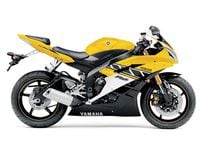
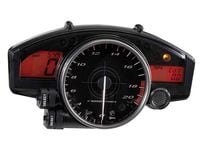
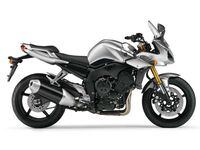

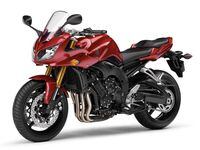
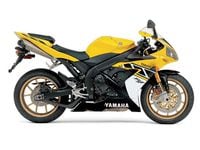
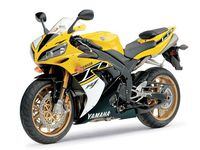
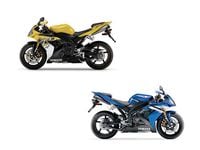


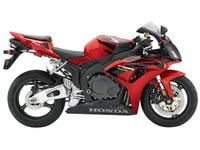


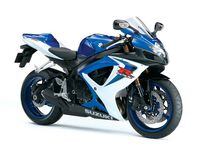

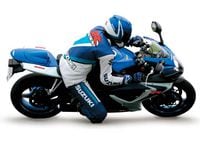

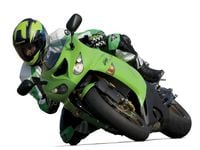
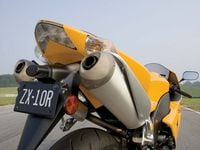

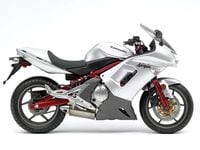
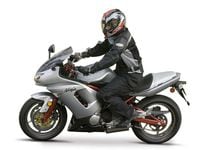

/cloudfront-us-east-1.images.arcpublishing.com/octane/S35YGSEMEZB4BLTDJTSZPF4GLA.jpg)
/cloudfront-us-east-1.images.arcpublishing.com/octane/5UOT6HPX2JFMRJAX6EH45AR4MQ.jpg)
/cloudfront-us-east-1.images.arcpublishing.com/octane/OKWOJWAKP5EP3OACCRRWPCIX2Q.jpg)
/cloudfront-us-east-1.images.arcpublishing.com/octane/2WF3SCE3NFBQXLDNJM7KMXA45E.jpg)
/cloudfront-us-east-1.images.arcpublishing.com/octane/G4MG6OUCJNBSHIS2MVVOTPX65E.jpg)
/cloudfront-us-east-1.images.arcpublishing.com/octane/IIGGWFOTOJGB7DB6DGBXCCMTDY.jpg)
/cloudfront-us-east-1.images.arcpublishing.com/octane/QSTCM6AVEZA5JJBUXNIQ3DSOF4.jpg)
/cloudfront-us-east-1.images.arcpublishing.com/octane/U4I7G625B5DMLF2DVIJDFZVV6M.jpg)
/cloudfront-us-east-1.images.arcpublishing.com/octane/B6XD6LS6IVCQPIU6HXDJSM3FHY.jpg)
/cloudfront-us-east-1.images.arcpublishing.com/octane/ICL63FEDDRDTTMINYICCEYGMDA.jpg)
/cloudfront-us-east-1.images.arcpublishing.com/octane/FCGZHQXRBZFLBAPC5SDIQLVF4I.jpg)
/cloudfront-us-east-1.images.arcpublishing.com/octane/WNOB6LDOIFFHJKPSVIWDYUGOPM.jpg)

/cloudfront-us-east-1.images.arcpublishing.com/octane/X33NU3E525ECRHXLNUJN2FTRKI.jpg)
/cloudfront-us-east-1.images.arcpublishing.com/octane/6KKT5NNL2JAVBOXMZYS5ZO76YA.jpg)
/cloudfront-us-east-1.images.arcpublishing.com/octane/J5RKG5O455GMPGQRF2OG6LRT7A.jpg)
/cloudfront-us-east-1.images.arcpublishing.com/octane/GX2CIZKQVRH2TATDM26KFG2DAE.jpg)
/cloudfront-us-east-1.images.arcpublishing.com/octane/ZWIDYSAKQZHD5BHREMQILXJCGM.jpg)
/cloudfront-us-east-1.images.arcpublishing.com/octane/CYUHJZCTSJCH3MRAQEIKXK7SCQ.jpg)
/cloudfront-us-east-1.images.arcpublishing.com/octane/LKOFINY56FCXJCANJ5M7ZDQUBY.jpg)
/cloudfront-us-east-1.images.arcpublishing.com/octane/4NBPDACMWJH63JQYJVK3QRBDZI.jpg)
/cloudfront-us-east-1.images.arcpublishing.com/octane/KKHQHRR3FJGX7H2IPU6RALMWG4.jpg)

/cloudfront-us-east-1.images.arcpublishing.com/octane/5IOFS5JAE5FOXMNA23ZRAVVYUU.jpg)